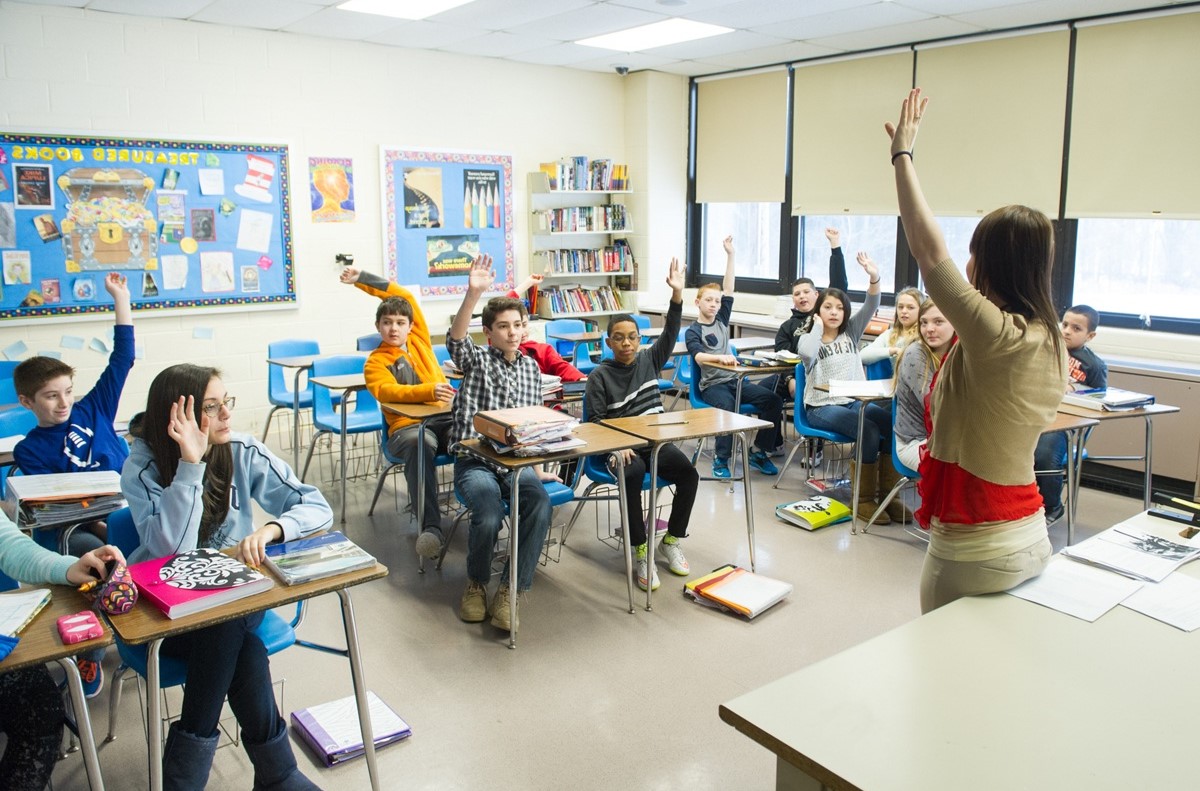
Classrooms are more than just spaces for learning; they are dynamic environments where students grow, interact, and develop essential life skills. Have you ever wondered what makes a classroom tick? From the arrangement of desks to the color of the walls, every detail plays a role in shaping the educational experience. Did you know that classroom design can impact student performance by up to 25%? Or that natural light can boost concentration and mood? Whether you're a teacher, student, or parent, understanding these elements can help create a more effective learning space. Let's dive into 50 intriguing facts about classrooms that will change the way you see these everyday spaces.
The Evolution of Classrooms
Classrooms have changed dramatically over the years. From one-room schoolhouses to modern digital learning environments, the journey has been fascinating.
- The first public school in the United States, Boston Latin School, was established in 1635.
- In the 19th century, classrooms often had students of all ages learning together.
- Chalkboards, invented in the early 1800s, revolutionized teaching by allowing teachers to write and erase information quickly.
- The introduction of the overhead projector in the 1960s allowed teachers to display notes and images to the entire class.
- Interactive whiteboards, introduced in the late 1990s, combined the functions of a computer and a traditional whiteboard.
Classroom Design and Layout
The design and layout of classrooms play a crucial role in the learning experience. Different setups can significantly impact student engagement and interaction.
- Traditional classrooms often have rows of desks facing the teacher.
- Modern classrooms may use flexible seating arrangements to encourage collaboration.
- Open-plan classrooms, popular in the 1970s, aimed to create a more fluid learning environment.
- Some classrooms use standing desks to promote better posture and focus.
- Circular seating arrangements can foster a sense of community and facilitate discussion.
Technology in the Classroom
Technology has become an integral part of education, transforming how teachers teach and students learn.
- Computers were first introduced into classrooms in the 1980s.
- The use of the internet in classrooms began to rise in the mid-1990s.
- Tablets and laptops are now common tools for students, providing access to a wealth of information.
- Educational apps and software can personalize learning experiences for students.
- Virtual reality is being used in some classrooms to create immersive learning experiences.
Teaching Methods
Different teaching methods have been developed to cater to diverse learning styles and needs.
- The lecture method, where the teacher speaks and students listen, has been used for centuries.
- The Socratic method involves asking questions to stimulate critical thinking.
- Project-based learning encourages students to work on projects over extended periods.
- Flipped classrooms have students learn new content at home and practice skills in class.
- Cooperative learning involves students working together in small groups to achieve learning goals.
Classroom Management
Effective classroom management is essential for creating a conducive learning environment.
- Establishing clear rules and expectations helps maintain order.
- Positive reinforcement can encourage good behavior and academic effort.
- Time management strategies help teachers cover all necessary material.
- Seating arrangements can be adjusted to minimize distractions.
- Consistent routines provide structure and predictability for students.
Classroom Diversity
Classrooms are becoming increasingly diverse, reflecting broader societal changes.
- Multicultural education promotes understanding and respect for different cultures.
- Inclusive classrooms accommodate students with various learning needs and disabilities.
- Language support programs help non-native speakers succeed academically.
- Gender-inclusive practices ensure all students feel respected and valued.
- Socioeconomic diversity can enrich classroom discussions and perspectives.
Classroom Resources
Resources available in classrooms can greatly enhance the learning experience.
- Libraries provide access to a wide range of books and research materials.
- Science labs offer hands-on learning opportunities for experiments.
- Art supplies allow students to express creativity and explore different mediums.
- Sports equipment supports physical education and promotes healthy lifestyles.
- Digital resources, such as online databases and e-books, expand learning opportunities.
Classroom Challenges
Despite advancements, classrooms still face various challenges that need addressing.
- Overcrowded classrooms can hinder individual attention and learning.
- Limited funding can restrict access to necessary resources and technology.
- Behavioral issues can disrupt the learning environment.
- Standardized testing pressures can impact teaching methods and student stress levels.
- Teacher burnout is a significant concern, affecting the quality of education.
The Future of Classrooms
Looking ahead, classrooms will continue to evolve, incorporating new technologies and teaching methods.
- Artificial intelligence could provide personalized learning experiences for each student.
- Augmented reality might bring interactive and engaging lessons to life.
- Online learning platforms will likely become even more integrated into traditional education.
- Sustainable classroom designs will focus on energy efficiency and environmental impact.
- Global classrooms could connect students from different countries for collaborative projects.
Fun Facts About Classrooms
Classrooms have some interesting and quirky aspects that might surprise you.
- The largest classroom in the world, located in India, can accommodate over 12,000 students.
- Some schools in Japan have classrooms with tatami mats instead of desks and chairs.
- In Finland, students often have 15-minute breaks between lessons to relax and recharge.
- The oldest continuously operating school in the world, The King's School in Canterbury, England, was founded in 597 AD.
- In some parts of the world, outdoor classrooms are used to connect students with nature and provide a unique learning experience.
Final Thoughts on Classroom Facts
Classrooms are more than just places for learning; they're hubs of creativity, growth, and connection. From the quirky traditions to the surprising statistics, these classroom facts highlight the unique aspects of education. Knowing that the average student spends around 15,000 hours in school or that some classrooms have pets to boost morale can change how we view education.
Understanding these facts can help students, teachers, and parents appreciate the classroom environment even more. Whether it's the history of the chalkboard or the benefits of natural light, each fact adds a layer of depth to our understanding of education. So next time you're in a classroom, remember these tidbits. They might just make your experience a bit richer and more enjoyable.
Was this page helpful?
Our commitment to delivering trustworthy and engaging content is at the heart of what we do. Each fact on our site is contributed by real users like you, bringing a wealth of diverse insights and information. To ensure the highest standards of accuracy and reliability, our dedicated editors meticulously review each submission. This process guarantees that the facts we share are not only fascinating but also credible. Trust in our commitment to quality and authenticity as you explore and learn with us.


